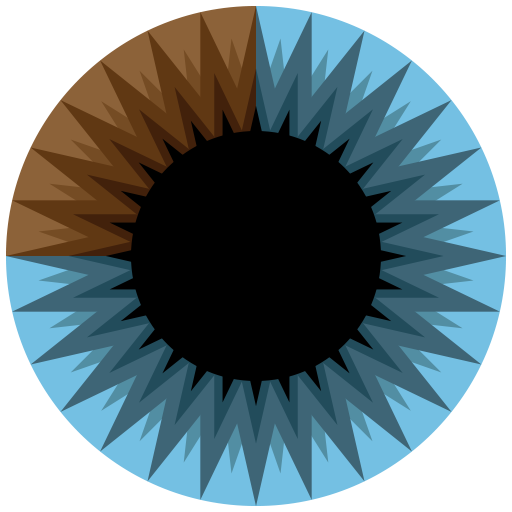Math 242: Calculus I
1 Why Calculus?
1.1 What is Calculus?¶
$$ \require{color} \definecolor{brightblue}{rgb}{.267, .298, .812} \definecolor{darkblue}{rgb}{0.0, 0.0, 1.0} \definecolor{palepink}{rgb}{1, .73, .8} \definecolor{softmagenta}{rgb}{.99,.34,.86} \definecolor{blueviolet}{rgb}{.537,.192,.937} \definecolor{jonquil}{rgb}{.949,.792,.098} \definecolor{shockingpink}{rgb}{1, 0, .741} \definecolor{royalblue}{rgb}{0, .341, .914} \definecolor{alien}{rgb}{.529,.914,.067} \definecolor{crimson}{rgb}{1, .094, .271} \def\ihat{\mathbf{\hat{\unicode{x0131}}}} \def\jhat{\mathbf{\hat{\unicode{x0237}}}} \def\khat{\mathbf{\hat{\unicode{x1d458}}}} \def\tombstone{\unicode{x220E}} \def\contradiction{\unicode{x2A33}} $$
Definition¶
Calculus¶
Calculus is a system of methods for computation that includes both infinitesimal calculus and integral calculus.
The word calculus means small pebble or stone in Latin, calx (limestone) + ulus (small size). Modern Calculus was developed independently by Isaac Newton and Gottfried Wilhelm Leibniz.
Differential (infinitesimal) and integral calculus divide problems geometrically into
smaller units (pebbles) of identical shape but smaller and smaller sizes
smaller and smaller units of identical shape and size
smaller units of identical size but subtly differing shapes
Due to the strong relationship between algebra, geometry, and modern calculus, one often refers to the combined subject as Analytic Geometry.
This definition is terse and lacks enough information about the heart of calculus. Dr. Steven Strogatz explains how calculus reveals the secrets of the universe in his lecture

(you can stop at 49:25 if you don't want to listen to the questions and answers)
1.2 Where Does One Start?¶
One should start with a video by Grant Sanderson, ![]() The Essence of Calculus.
The Essence of Calculus.
Modern calculus breaks down into two main branches
Dividing problems into ever smaller units so that we may easily compute rates of change. This is called differential calculus.
Adding all of these small changes up to obtain a total displacement. This is called integral calculus.
Understanding our main goals is important to understanding our journey. We need to familiarize everyone with this language. Like any language course, we start with its simplest forms and their meaning. In each successive semester we will add more complicated expressions and strive to understand how to use the language of calculus to describe more complicated relationships.
Calculus 1 is an introduction to differential and integral calculus, as well as some historically important problems that it can solve. The problems discussed in calculus class are usually abstracted away from any particular application because most natural phenomena described using these expressions are all analyzed using the same techniques.
Calculus 2 is a study of the harder elements of integral calculus. Computing derivatives is child's play to computing anti-derivatives. Most often integration involves recognizing an expression as the derivative of another expression we already know. There are many clever techniques for manipulating an expression using algebra, trigonometry, and differential calculus into a form we recognize.
Calculus 3 broadens our understanding of the language of calculus into expressions involving more than one independent and/or dependent variable. This is necessary since we live in a world with at least four dimensions. In addition to our physical world of space-time, many problems require discussing possible additional inputs to our expressions such as, pressure, temperature, mass, altitude, energy, voltage, current, luminous intensity, et. al.
Linear Algebra is the language of vector spaces and linear maps between vector spaces. Differentiation and Integration can be expressed as linear maps between abstract vector spaces. We often express several inputs or outputs as a vector of inputs if we can define them as members of an appropriate vector space.
A Differential Equation is a mathematical equation or sentence that describes the relationships between functions and their derivatives. Such an equation can describe the relationship between
- the size of a population and its rate of change.
- the position of a particle in a field and its acceleration
- the concentration of a catalyst and the rate of a chemical reaction
Statistics uses calculus to express the relationship between large sets of data and its quantitative characteristics.
STEM courses all use linear algebra, differential equations, and statistics to express the geometric and quantitative forms of their field of study.
1.2 Resources¶
There are many good resources for explanations of modern calculus online.
Grant Sanderson's
 Calculus
CalculusOpenStax textbook Calculus, volume 1
Paul's Online Notes Calculus 1
Professor Leonard's Calculus 1
Our course management system, blackboard
Every student should log into Blackboard frequently and use the resources contained in our course web portal.
1.3 Prerequisites¶
The prerequisites for Calculus 1 are the subjects algebra, geometry, and trigonometry. The first 4 reference formula cards in our e-book contain most of the formulas that comprise these subjects. However there is more to these subjects than formulas. Learning calculus requires understanding of these three topics well enough that we can use the language of these subjects to
- create new definitions
- illustrate new concepts using prerequisite language
- discuss applications of new definitions to problems
This is going to be the hardest part of any student's trek to mastering calculus. In calculus we define and master
- Functions
- Limits
- Derivation
- Integration
Even including some new vocabulary to acquire, this is small list. A student must show proficiency with these new concepts by applying them to problems in each of the prerequisite fields of study. Moreover a calculus student finds that proficiency in all three of these prerequisites are necessary to solve problems using our new skills.
Your use of this self-initiated mediated course material is subject to our
Creative Commons License 4.0
